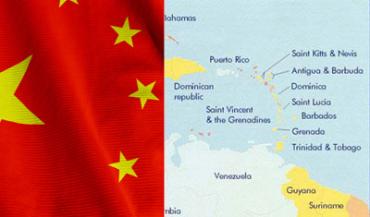Time to recalibrate China-Caribbean relationship
- By Earl Bousquet
 0 Comment(s)
0 Comment(s) Print
Print E-mail China.org.cn, January 6, 2013
E-mail China.org.cn, January 6, 2013
 |
| In recent years, China-Caribbean relations have maintained good momentum with frequent high-level exchanges. |
China ended 2012 with its changing of the guard at the 18th National Congress of the Communist Party of China (CPC) and began 2013 with its new leader Xi Jinping poised to take the helm.
The next decade will naturally bring new challenges at home and abroad that will require new approaches to national development and to China's relationships with both the developed and developing world.
Beijing has historically turned challenges into opportunities, so no one doubts it will continue to be guided both by set policies and emerging realities. But China in 2013 and beyond will also be expected, mainly by its friends, to assume the new and added responsibilities that come with its emerging role as a global superpower. It will continue to play a leading role in the BRICS entity, which includes the most developed of the developing countries. But it will also need to engage with the world's smaller nations that, because of size, population and economy, are increasingly being marginalized or isolated globally.
China's growing relationship with the region the world generally refers to as Latin America and the Caribbean (LAC) will require some special attention in the next five years.
Though conveniently lumped together by geography, the LAC group is actually a convenient alliance between two neighboring regions that have separate languages, histories and cultures. They co-exist on the world stage, but their political systems, cultures and economies are quite different. Spanish-speaking Latin America is home to hundreds of millions of people; the largely English-speaking Caribbean Community (CARICOM) has approximately 6 million.
China-LAC ties have been developing progressively in the past decade. There have been 17 China-LAC ministerial consultations with MERCOSUR (the Common Market of the South) and CARICOM. China is a non-borrowing member of the Inter-American Development Bank (IADB) and the Caribbean Development Bank (CDB). It also has observer status in regional organizations like the Organization of American States (OAS) and is engaged with the recently-formed Community of Latin American and Caribbean States (CELAC).
In the five years between 2004 and 2009, Chinese President Hu Jintao visited the LAC region four times. Vice President Xi Jinping visited Chile in June 2011. In 2012 President Hu and Premier Wen Jiabao -- the country's top two leaders at the time -- both visited. Similarly, over 25 top LAC leaders visited China over the same period.
China-LAC trade is booming. Between 2001 and 2010 it was valued at US$183 billion (imports at US$91.24 billion and exports at US$91.82). In 2010 alone, bilateral trade was worth US$11 billion. Education and cultural ties have also improved over the years with 15 agreements for cultural and educational exchanges. Scholarships for study in China are offered to the region annually. There are 23 Confucius Institutes in the LAC region and some 21 LAC countries have been added to China's list of approved travel destinations.
China and the LAC region also share a long history. Chinese explorers already had maps of Latin America and the Caribbean in 1418 -- more than seven decades before Columbus and the Europeans first arrived in 1492. But China's re-engagement with the English-speaking Caribbean is of more recent vintage. The first Chinese arrived in Guyana, Jamaica and Trinidad & Tobago in the 1840s -- along with Indian indentured servants -- following the abolition of slavery in the British Caribbean in 1838. Another batch arrived in Jamaica in 1854. (Interestingly, all the early Chinese in the Caribbean came from China's Guangdong Province. Today, people of Chinese descent can be found in every Caribbean territory.)
But there are new factors that will color China's relationships with Latin America and with the Caribbean, both as a whole and in parts. The dynamics of the current acceleration of improved cross-Straits ties also have implications for Chinese mainland and Taiwan's respective relations with the countries of LAC region and vice versa.





